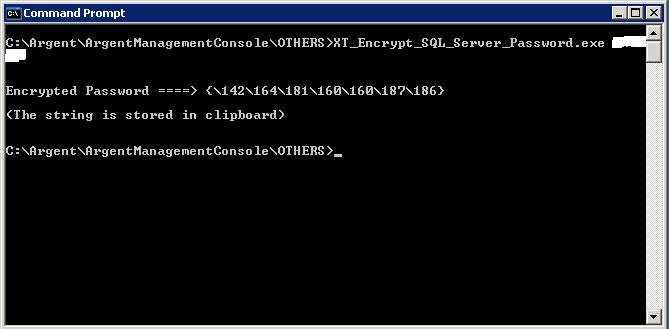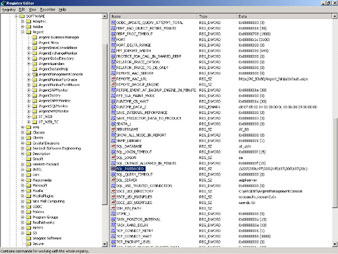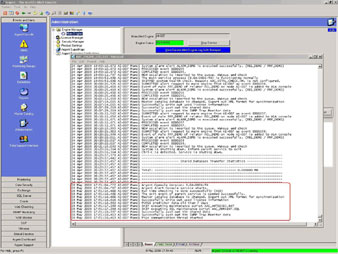Changing the SQL Server Backend Database Password
Some Customers need to use explicit SQL Server account and password for the Argent backend database.
(Argent recommends using SQL Server’s Trusted Connection option).
Argent stores SQL Server password in the registry, one entry per licensed product.
| Argent Management Console And Argent Console | HKLM\Software\Argent\ArgentManagementConsole\SQL_PASSWORD |
| Argent Guardian | HKLM\Software\Argent\ArgentGuardian\SQL_PASSWORD |
| Argent Exchange Monitor | HKLM\Software\Argent\ArgentExchangeMonitor\SQL_PASSWORD |
| Argent Data Consolidator | HKLM\Software\Argent\ArgentDataConolidator\SQL_PASSWORD |
| Argent SQL Monitor | HKLM\Software\Argent\ArgentSQLMonitor\SQL_PASSWORD |
| Argent Monitor For Oracle | HKLM\Software\Argent\ArgentMonitorForOracle\SQL_PASSWORD |
| Argent Sentry | HKLM\Software\Argent\ArgentSentry\SQL_PASSWORD |
| Argent SNMP Monitor | HKLM\Software\Argent\ArgentSNMPMonitor\SQL_PASSWORD |
| Argent Monitor For Vmware | HKLM\Software\Argent\ArgentMonitorForVMware\SQL_PASSWORD |
| Argent SAP Monitor | HKLM\Software\Argent\ArgentSAPMonitor\SQL_PASSWORD |
| Argent WMI Monitor | HKLM\Software\Argent\ArgentWMIMonitor\SQL_PASSWORD |
| Argent Global Directory | HKLM\Software\Argent\ArgentGlobalDirectory\SQL_PASSWORD |
SQL password is encrypted and stored in the format of “{encrypted_string}”.
When SQL password is changed, you can explicitly modify each of SQL password registry entry so you don’t have to reinstall the entire product.
But…
First you need to encrypt the password so SQL Server can understand it.
Argent has created a special utility for this purpose.
The Argent utility is called XT_Encrypt_SQL_Server_Password.exe, and is located in the x\Argent\ArgentManagementConsole\Others directory.

The next manual step has to be done with extreme care:
Now cut and paste the encrypted password into the registry entry for the product.
When this is done incorrectly, and you attempt to start the product you will see the following error in the Argent Log.txt file

